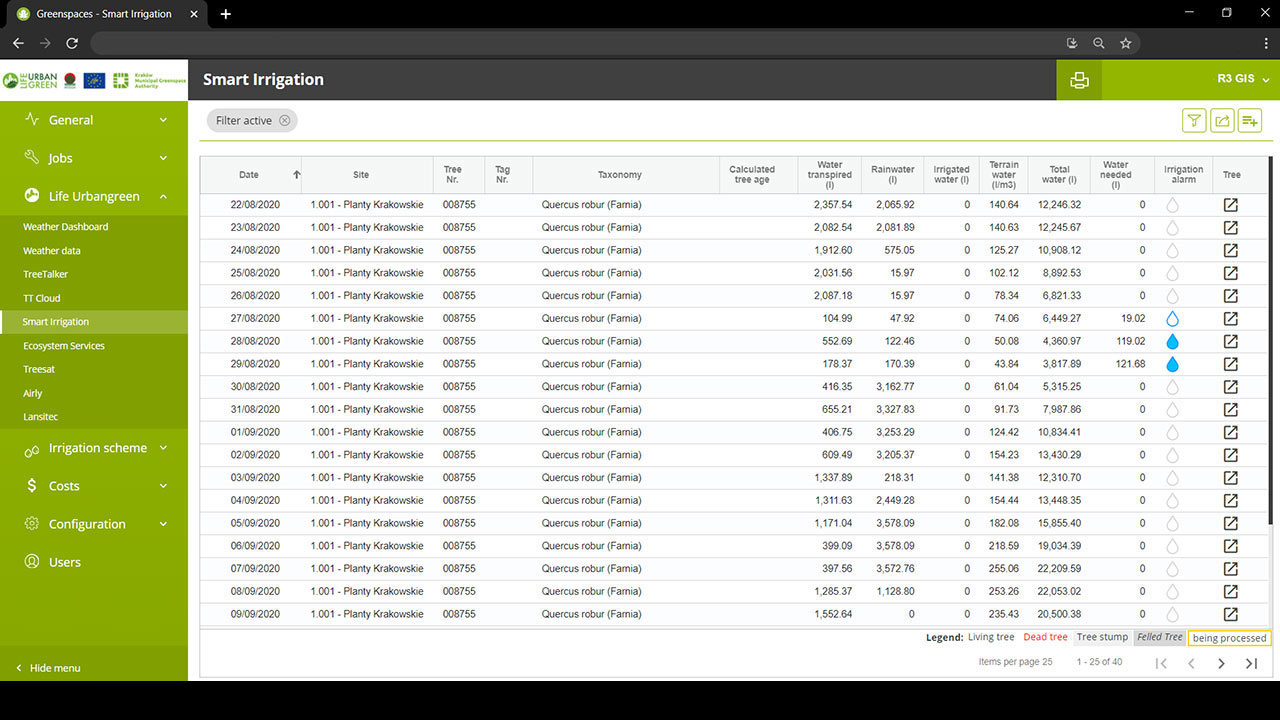Trees as Climate Protectors
The LIFE URBANGREEN project investigates how much CO2 trees permanently assimilate and how much CO2 they stock in their woody biomass. These data are calculated for the most common tree species and are then applied to assimilated species that have very similar characteristics. This makes the role of urban trees as climate protectors visible. Now, the first results are available: each tree of the analysed species in Rimini and Krakow permanently stocks an average of 30 kilogrammes of climate-damaging CO2 per year. This corresponds to the CO2 emissions of a car journey of 200 kilometres. Temporarily, a tree absorbs an average of 1.5 tonnes of CO2 per year, which is equivalent to the CO2 emissions of a car journey of 10,000 kilometres. At the end of the day or the growth season, the CO2 is released back into the environment as organic matter (leaves in autumn) or gas (CO2 during the night). One could also say: the tree is like a bank that allows a credit balance for a limited period of time.
The LIFE URBANGREEN team also determined which of the tree species studied assimilates the most CO2 and stocks it over time. In Rimini and Krakow, despite different climatic conditions, the leaves of black poplar (Populus nigra) and European oak (Quercus robur) assimilate the most CO2. Boxelder (Acer negundo) performs less well. But there are also climatic differences: In Rimini, spring sets in earlier and there is drought in summer. Linden (Tilia) and Plane trees (Platanus) are extremely effective in CO2 assimilation as long as there is enough water available. The researchers also investigated whether trees absorb more or less CO2 depending on their planting site: a park or along a road. Stay tuned: we will provide updates on this topic in the next newsletters.






